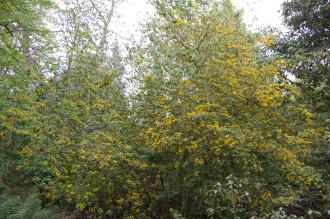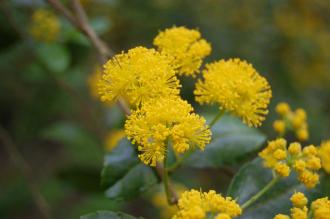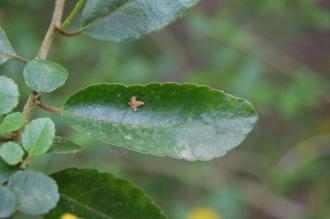
Azara serrata (19/04/2014, Kew Gardens, London)
Position: Full sun to light shade
Flowering period: Spring
Soil: Moist, well drained
Eventual Height: 5m
Eventual Spread: 4m
Hardiness: 8b, 9a, 9b, 10a, 10b
Family: Salicaceae
Azara serrata is an evergreen shrub/ small tree with bushy habit. Its dark green glossy leaves are ovate with serrate margins, up to 6cm long and 2cm broad. Its fragrant yellow hermaphrodite flowers appear in clusters and are up to 2cm across. Its white fruit is a berry and up to 6mm across.

Azara serrata Flower (19/04/2014, Kew Gardens, London)
Azara serrata, commonly known as the Saw Toothed Azara, is native to Argentina and Chile. In its native habitat it grows in marshes bogs, river, lake banks and will tolerate dry periods.
The etymological root of the binomial name Azara is named after Félix de Azara (1746 – 1821), a Spanish geographer. Serrata is derived from the Latin serratus meaning ‘saw’, in reference to the leaf margins of this shrub.
The landscape architect may find Azara serrata useful as a medium sized, evergreen spring flowering shrub with interesting berries, suitable for wet soils.

Azara serrata Leaf (19/04/2014, Kew Gardens, London)
Ecologically, Azara serrata flowers are attractive to nectar loving insects.
The Royal Horticultural Society has given Azara serrata their prestigious Award of Garden Merit in 2002.
Azara serrata prefers moist, fertile, well-drained soils. It will tolerate most pH of soil.
Azara serrata requires little maintenance.

